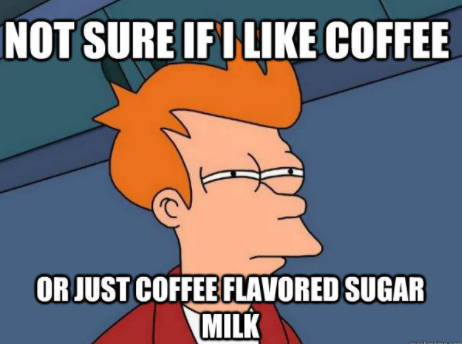
With Valentine’s Day around the corner, millions of people are about to receive sugary treats from their special someone. Pounds will be gained. Diets will be submarined.
This holiday is just one of the many days that we love to indulge. Research tells us that the average American consumes 80 pounds of added sugar per year, or 22 teaspoons per day.
That’s the equivalent of drinking three 12 oz. cans of Coke every…single…day.
Sugar has long been vilified as the root of all nutritional evil and the primary reason one-third of Americans are obese. Googling “is sugar bad for you?” tells you that sugar:
- Contains no nutrients, is bad for your teeth, and causes fatty liver disease
- Can lead to metabolic disease, type-2 diabetes, cancer, and heart disease
- Makes you obese, shortens your life, and is detrimental to brain chemistry
I love this Huffington Post headline: “Fatty and Sugary Foods are as Addictive as Cocaine and Nicotine, Warns Health Experts.” In other words, Twinkies are as bad as blow.
Here at Hack Your Fitness, we love dispelling bullshit fitness myths, and today we’re tackling the lie that you can’t get shredded if you eat sugar. This is a half-truth being peddled by the “Eat Clean Club” that also believes all carbs are bad and olive oil is good in any amount.
Enough is enough. Sugar is not the villain here, and in this post, I’m going to prove it.
What Happens When You Eat Sugar
All foods break down into one of the three macronutrients and sugar is a carbohydrate.
If you read my piece on intermittent fasting, you know that when you consume carbs, they either get burned up in your body as energy or stored as fat.
How efficiently your body burns carbs depends on your insulin sensitivity. When your body detects an uptick in blood sugar, the pancreas produces insulin to break down that sugar.
When you consume a lot of sugar and your pancreas is forced to produce high levels of insulin, you’re headed for a crash. The stage after the insulin spike is called hypoglycemia. For anyone who’s experienced this state, you feel shaky and weak because your insulin levels are low.
If you’ve ever wondered why you get sleepy after a big cheat meal, now you know it’s due to the insulin spike and subsequent crash. Frequent spikes and crashes make your body less sensitive to insulin.

Intermittent fasting has the opposite effect—it makes you more sensitive to insulin and your body essentially torches any food energy that crosses its path.
Like any drug, consuming too much sugar causes insulin to lose its effectiveness.
Low insulin sensitivity means that when you eat a candy bar, your body pumps out insulin but it has no effect and those carbs go straight to fat. That’s how you wind up diabetic.
As we move forward, keep in mind the key phrase in that warning: “Too much sugar.”
All Sugar is Chemically the Same
“Clean eaters” show a strong bias towards natural sugar over processed sugar. Here’s the truth they won’t admit: When you break it down, all sugar is chemically the same.
From a pure sugar perspective, a piece of fruit is no different than a piece of candy.
To understand how our body breaks down sugar, you must start with a basic understanding of sugar in its two main forms, the first of which is monosaccharides.
Monosaccharides, or simple sugars, include:
- Glucose: More commonly known as blood sugar.
- Fructose: Sugar found in fruit and in more complex sugar products like sucrose (table sugar) and high fructose corn syrup.
- Galactose: Less sweet than the others, it’s found in dairy, beets, and natural gum.
When two monosaccharides join, you get disaccharide sugar, which includes:
- Sucrose: Sugar found in the stems of sugarcane and sugar beets.
- Lactose: Milk and dairy sugar. Babies are born with an enzyme that breaks down milk sugar to be used as energy in the body. Adults can lose this enzyme as they get older and become lactose intolerant. (Strange fact: 90% of Asians are lactose intolerant!)
- Maltose: Includes sugar that is found in malt beer, cereal, pasta, and potatoes.
Now that we know the types of sugar and have reviewed how our bodies handle carbs, let’s see how our bodies react to different types of sugar by examining the glycemic index.
How Blood Sugar Responds to Different Sugars
The glycemic index (GI) measures how quickly certain types of food increase the body’s blood sugar level on a scale of 1-100, with 100 being pure glucose.
The more refined the food is—think white rice, candy, table sugar—the higher it is on the scale and the more likely that food is to get converted to blood sugar in our bodies.
Foods like brown rice or potatoes are low on the GI. The secret behind Tim Ferriss’s slow carb diet is picking carbs that are low on the GI and don’t impact your insulin sensitivity.
The food industry, in its eternal quest to increase the bottom line, has found ways to disguise sugar on the nutrition labels that are legally required for all foods.
This list from Harvard shows 24 ways sugar can be listed on nutrition labels.
Since your body is an equal opportunity sugar factory, you must be aware of how much sugar you’re consuming to save your waistline and your insulin sensitivity.
The sugars in each might be chemically the same, but the difference between a Dairy Queen Blizzard and a banana (other than the Blizzard tasting 100x better) is twofold:
- Sugar from fruits and vegetables fall lower on the GI and can therefore be consumed in higher quantities than refined sugar found in Blizzards and other sweet treats.
- Natural sources of sugars also contain vitamins, minerals, and fiber.
That Blizzard (red line) will cause a higher insulin spike than the sweet potato (green line).

Don’t be fooled, though. If you’re on a weight loss program, not all fruits are your friend. Berries, for instance, fall lower on the GI (22) than watermelons, which clock in at a whopping 100!
Be Careful with Artificial Sweeteners
The first artificial sweetener most people think of is high fructose corn syrup, which, despite the name, is composed of 50% fructose and 50% glucose.
Producers of high fructose corn syrup would argue that it’s no different on the molecular level than regular sugar, and according to research, they’re right.
One expert panel concluded that “high fructose corn syrup does not appear to contribute to overweight and obesity any differently than any other energy source.”
Like other simple sugars, high fructose corn syrup can only harm us if it’s over-consumed.
Other artificial sweeteners include aspartame, sucralose, Stevia, and sucroline. You might also recognize names like NutraSweet, Equal, and Pure Via.
In recent years, consumers have switched over to products like diet soda and sugar-free desserts that contain low-calorie or no-calorie sweeteners.
Hundreds of regulatory agencies globally have approved the use of these sweeteners in foods, but I still see cause for concern. Here’s why:
- Aspartame has been linked to an increased risk of cancer.
- The human body can’t break down some sweeteners, including Splenda.
I can’t in good conscious recommend regular consumption of artificial sweeteners. These substances are so new that they haven’t been studied conclusively enough yet.
If you’re on a program like Hack Your Fitness and you need some zero calorie, sugar-free products to deal with being on a caloric restriction, it’s OK to indulge.
But this should be a short-term strategy, not a lifelong dietary staple.
Sugar is Not Addictive
Despite what the Huffington Post says, sugar is not addictive.
Tasting sugar gives your brain a biological reward in the form of dopamine, but so does sex, music, exercise, certain foods containing tyrosine, and supplements.
Sugar’s only crime is that it tastes so good we’re guilty of overeating it.

A human’s desire to pursue pleasure should not be confused with addiction.
If you want to lump sugar into the same category as drugs and alcohol, you should treat it with the same level of respect you show those truly addictive substances.
Exercise self-control, take responsibility for your actions, and make a conscious decision not to be controlled by your desire for sugar. Keep your cravings in check and you’ll be fine.
How much sugar is enough? The FDA tackled this question with its new dietary guidelines that recommend getting no more than 10% of your calories from added sugar.
Sugar is just like any other calorie—consume too much and your body will suffer.
The sugar witch hunt is bogus. Studies have shown “no clear or convincing evidence that any dietary or added sugar has a unique or detrimental impact relative to any other source of calories on the development of obesity or diabetes.”
That said, if you’re looking to reduce your calorie consumption, sugar is a great place to start.
The more sugar you eat, the more calories you put into your body and the more energy you must burn to prevent fat storage. That’s the law of energy balance.
The more body fat you carry, the less efficient your body becomes at breaking down sugar. It’s a vicious circle, but at the end of the day, sugar in and of itself is not the culprit—you are.
